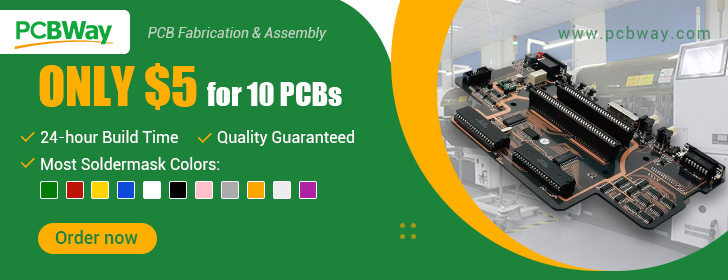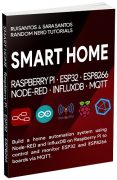Learn how to program the Raspberry Pi Pico 2 or 2 W boards using Arduino IDE. The Raspberry Pi Pico 2 / 2 W is a microcontroller developed by the Raspberry Pi Foundation, built around the RP2350 chip. It offers a wide range of GPIO pins for connecting peripherals and can be programmed using MicroPython or C/C++. In this tutorial, you’ll learn how to program it using C/C++ programming language using Arduino IDE software.

What is the Raspberry Pi Pico 2?
The Raspberry Pi Pico 2 is the successor of the Raspberry Pi Pico. It uses the RP2350 chip. It is a microcontroller board like the ESP32 or ESP8266 (not a microcomputer like the Raspberry Pi). Similarly, it can be programmed using Arduino IDE and some of the same methods and functions you would use with the ESP32 and ESP8266 boards.
Where to Buy Raspberry Pi Pico 2?
The Raspberry Pi Pico 2 W board is widely available on many different stores. Check the following link to compare its price on different stores:

New to the Raspberry Pi Pico 2? Check our getting started guide: Getting Started with Raspberry Pi Pico 2 and Pico 2 W.
Programming the Raspberry Pi Pico 2 Using Arduino IDE
Follow this section to learn how to program the Raspberry Pi Pico boards using Arduino IDE.
Installing Arduino IDE
Before proceeding, you need to install Arduino IDE on your computer. Install version 2 of the Arduino IDE. You can download and install Arduino IDE by clicking on the following link:
Adding the Raspberry Pi Pico to the Boards Manager
1. In the Arduino IDE, go to File > Preferences.

2. Enter the following URL into the “Additional Boards Manager URLs” field:
https://github.com/earlephilhower/arduino-pico/releases/download/global/package_rp2040_index.json
Then, click the “OK” button:

Note: if you already have the ESP32 and/or ESP8266 boards URLs, you can separate the three URLs with a comma as follows:
https://github.com/earlephilhower/arduino-pico/releases/download/global/package_rp2040_index.json, https://raw.githubusercontent.com/espressif/arduino-esp32/gh-pages/package_esp32_index.json,http://arduino.esp8266.com/stable/package_esp8266com_index.json
3. Open the Boards Manager. Go to Tools > Board > Boards Manager…
4. Search for “pico” and install the Raspberry Pi Pico/RP2040/RP2350 boards by Earle F. Phillhower.

5. That’s it. It will install after a few seconds.
6. Now, if you go to Tools > Board, there should be a selection of Raspberry Pi Pico boards.

Now you have everything prepared to start programming your Raspberry Pi Pico board using Arduino IDE. Don’t connect the board to your computer yet.
1. Selecting your Pico Board
Go to Tools > Board and select the Raspberry Pi Pico model you’re using—Pico 2 or Pico 2 W (wireless support).
2. Loading the Blink LED Sketch
As an example, we’ll upload the classic Blink LED sketch. Go to File > Examples > 1. Basic > Blink.
The following example should load.

Or you can copy the following code:
/*
Blink - Turns an LED on for one second, then off for one second, repeatedly.
Most Arduinos have an on-board LED you can control. On the UNO, MEGA and ZERO it is attached to digital pin 13, on MKR1000 on pin 6. LED_BUILTIN is set to the correct LED pin independent of which board is used.
If you want to know what pin the on-board LED is connected to on your Arduino model, check the Technical Specs of your board at: https://www.arduino.cc/en/Main/Products
modified 8 May 2014 by Scott Fitzgerald modified 2 Sep 2016 by Arturo Guadalupi modified 8 Sep 2016 by Colby Newman This example code is in the public domain. https://www.arduino.cc/en/Tutorial/BuiltInExamples/Blink
Programming Raspberry Pi Pico with Arduino IDE: https://RandomNerdTutorials.com/programming-raspberry-pi-pico-w-arduino-ide/
*/
// the setup function runs once when you press reset or power the board
void setup() {
// initialize digital pin LED_BUILTIN as an output.
pinMode(LED_BUILTIN, OUTPUT);
}
// the loop function runs over and over again forever
void loop() {
digitalWrite(LED_BUILTIN, HIGH); // turn the LED on (HIGH is the voltage level)
delay(1000); // wait for a second
digitalWrite(LED_BUILTIN, LOW); // turn the LED off by making the voltage LOW
delay(1000); // wait for a second
}
3. Connecting the Raspberry Pi Pico 2 in BOOTLOADER mode
To upload code to the Raspberry Pi Pico, it must be in bootloader mode.
If the Raspberry Pi is currently running MicroPython firmware, you need to manually put it into bootloader mode. For that, connect the Raspberry Pi Pico to your computer while holding the BOOTSEL button at the same time. A new mass storage device window will open on your computer. You can ignore it and close that window.

For future uploads using Arduino IDE, the board should go automatically into bootloader mode without the need to press the BOOTSEL button.
Now, open the top drop-down menu and click on Select other board and port…

For the board, select Raspberry Pi Pico 2 or Raspberry Pi Pico 2 W.
The COM port might not show up on your first upload, so you need to tick the Show all ports option. Then, select the COM port.

Now, you can upload the code.

You should get a success message.

Demonstration
If everything went as expected, the Raspberry Pi Pico onboard LED should be blinking every second.


And that’s it. You successfully programmed your Raspberry Pi Pico 2 using Arduino IDE.
Wrapping Up
In this guide, you learned how to program the Raspberry Pi Pico board using Arduino IDE. It shares many of the same functions also used for programming ESP32, ESP8266, and Arduino boards.
We have more tutorials on how to program the Raspberry Pi Pico board using Arduino IDE (all tutorials are compatible with version 1 and version 2 of the Pico board).
- Raspberry Pi Pico: Control Digital Outputs and Read Digital Inputs (Arduino IDE)
- Raspberry Pi Pico: Read Analog Inputs (Arduino IDE)
- Raspberry Pi Pico: Fading an LED using PWM (Arduino IDE)
- Raspberry Pi Pico: DHT11/DHT22 Temperature and Humidity Sensor (Arduino IDE)
- Raspberry Pi Pico: DS18B20 Temperature Sensor (Arduino IDE) – Single and Multiple
- Raspberry Pi Pico: BME280 Get Temperature, Humidity, and Pressure (Arduino IDE)
For more resources, you can check all our Raspberry Pi Pico Projects and Guides here.
Thanks for reading.







